

|
|
Black Widow (Blu-ray)
[Blu-ray]
Blu-ray B - United Kingdom - Signal One Review written by and copyright: Paul Lewis (8th April 2016). |
|
The Film
 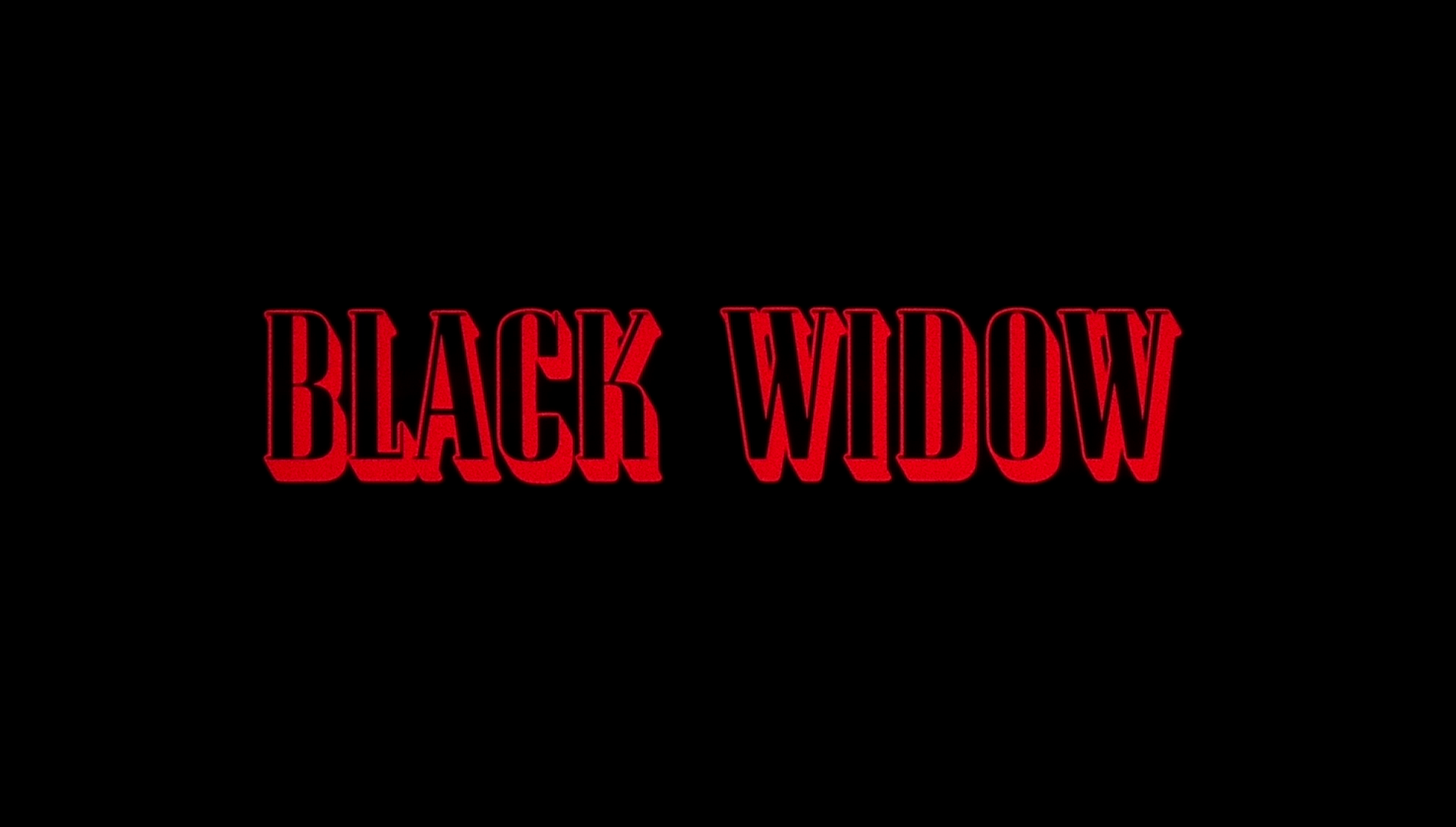 Black Widow (Bob Rafelson, 1987) Black Widow (Bob Rafelson, 1987)
A slickly efficient neo-noir picture, Black Widow (Bob Rafelson, 1987) was the first film Bob Rafelson had directed in six years, following The Postman Always Rings Twice in 1981. An early example of 1980s neo-noir, The Postman Always Rings Twice had demonstrated an overt noir heritage by adapting James M Cain’s 1934 novel of the same title, which had already been dramatised as the classic film noir The Postman Always Rings Twice (Tay Garnett, 1946) and by Italian filmmaker Luchino Visconti as Ossessione (1943). Black Widow begins with ‘Catharine’ (Theresa Russell) being told of the death of her husband, who has passed away in his sleep. Meanwhile, FBI investigator Alex (Debra Winger) is convinced that the death of Catharine’s husband, a Mafia don called Maranzano, ‘was a hit’ and persists in her investigation of it – despite the fact that the cause of death was a respiratory disorder called Ondine’s curse, which Alex’s colleague Mike (D W Moffett) tells her ‘It’s rare. It’s real. It happened’. 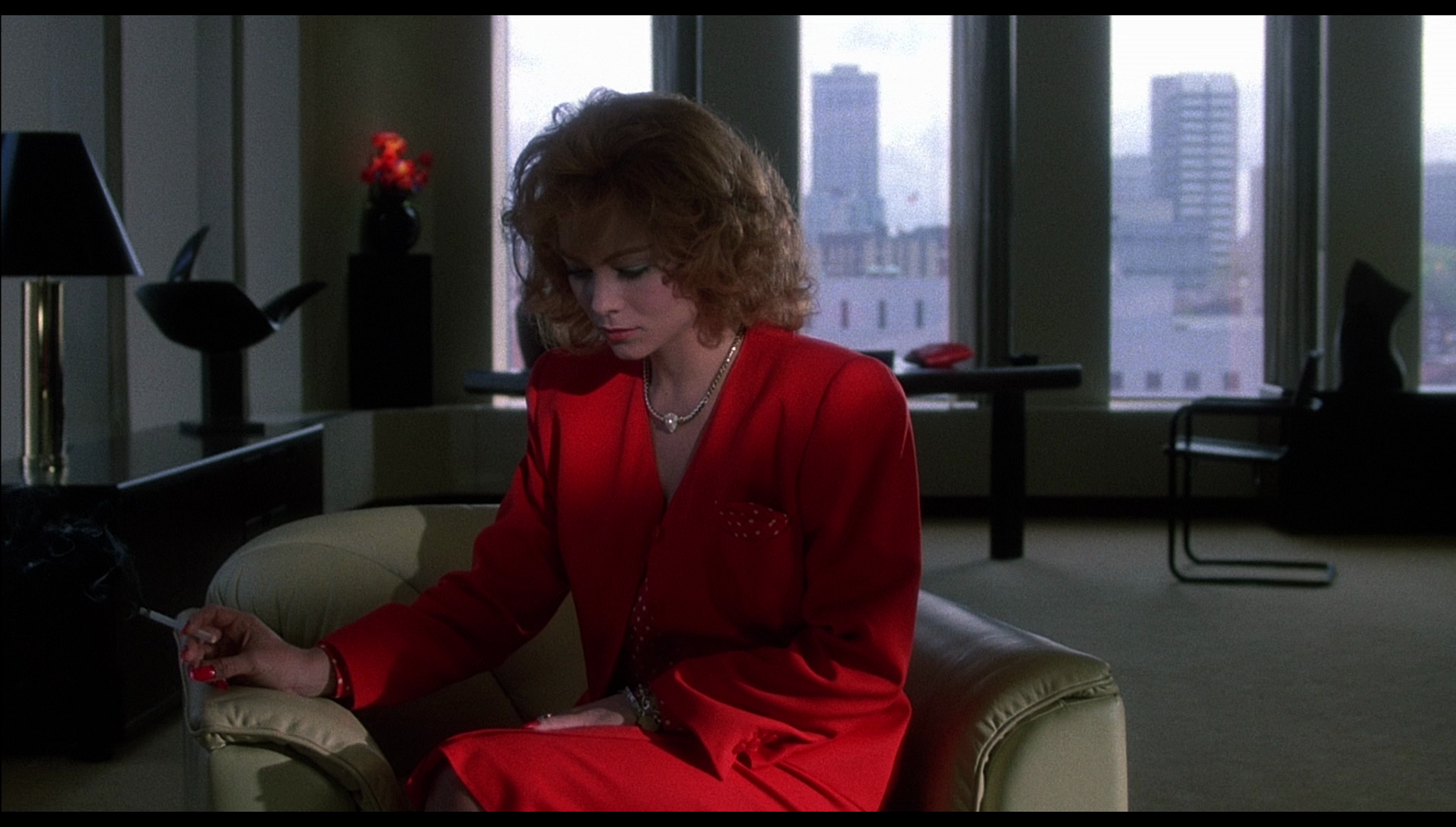 Meanwhile, Catharine has now adopted a new identity and is calling herself Marielle. Catharine sets her sights on Ben (Dennis Hopper), a wealthy Texan toy manufacturer. When Ben dies, with his cause of death again identified as Ondine’s curse, Catharine inherits his substantial wealth. Alex draws a connection between the deaths of Ben and Maranzano and pesters her manager Bruce (Terry O’Quinn) to allow her to investigate. Meanwhile, Catharine has now adopted a new identity and is calling herself Marielle. Catharine sets her sights on Ben (Dennis Hopper), a wealthy Texan toy manufacturer. When Ben dies, with his cause of death again identified as Ondine’s curse, Catharine inherits his substantial wealth. Alex draws a connection between the deaths of Ben and Maranzano and pesters her manager Bruce (Terry O’Quinn) to allow her to investigate.
Catharine, who has renamed herself Margaret, has moved on to another ‘victim’, McCorey (Nicol Williamson). Alex’s investigation leads her to McCorey, who reveals to Alex – who is masquerading as a journalist – that he has an allergy to penicillin. Soon after, McCorey is found dead, and Catharine has once again disappeared. Though McCorey’s cause of death seems to be a heart attack, Alex (correctly) reasons that it might have been precipitated by an allergic reaction owing to exposure to penicillin. Alex leaves her job in order to pursue Catharine, who is now in Hawaii, having set her sights on international hotelier Paul (Sami Frey). Alex enlists the help of a local private investigator, Shin (James Hong). Alex also approaches Catharine directly, taking a leaf out of Catharine’s proverbial book by adopting a pseudonym (‘Jessica Bates’). Alex and Catharine become friendly, but Catharine comes to the realisation that there is more to Alex than she initially believed, and Catharine begins her own investigation into her new companion. When Catharine appears to push Alex and Paul together, maneuvering them like pawns on a chessboard, she seems to be in the early stages of a very elaborate, dastardly plan. 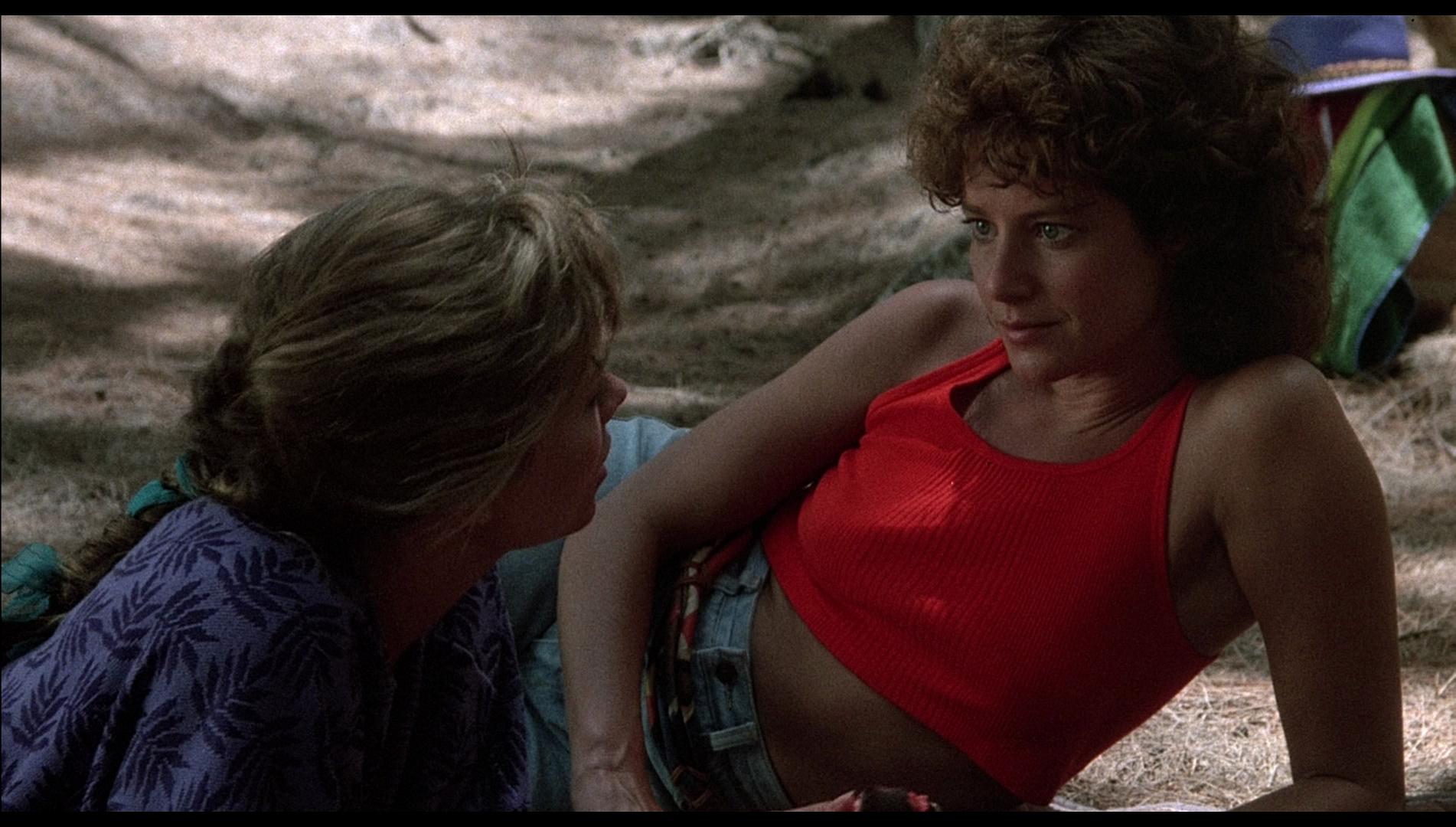 Made the same year as Adrian Lyne’s Fatal Attraction (1987), like Lyne’s picture Black Widow foregrounded the femme fatale archetype associated with classic film noir. Focusing on an investigation into a woman who, the film’s protagonist Alex believes, seems to be murdering her string of wealthy husbands, Black Widow makes explicit the connection between sex and death: ‘She mates and she kills’, the tagline on the film’s posters declared. (Commenting on the deaths of Maranzano and Ben, Mike tells Alex that they were ‘Both older guys […] each married to a young gal for a couple of month. Must be kind of bad for your health’.) In addition to establishing a connection between sex and death which is reflected in the film’s title, in the characters of Alex and Catharine, Black Widow contains two contrasting representations of femininity: the ‘good’, sexually repressed brunette (Alex), and the sexually liberated but ‘fatal’ blonde (Catharine). A number of later neo-noir films would similarly revolve around a heightened version of the femme fatale archetype including, notably, John Dahl’s The Last Seduction (1994) (see our review of that film here). Perhaps the closest narrative parallels may be found in Paul Verhoeven’s films De vierde man (The 4th Man, 1983) and Basic Instinct (1992). The last film Verhoeven made in the Netherlands before moving to Hollywood, De vierde man focuses on an alcoholic novelist (Jeroen Krabbe) becomes involved with a woman, Christine (Renee Soutendijk), who may have murdered her three husbands, leading to the suggestion that she is a ‘black widow’ and that the protagonist may become the titular ‘fourth man’. Verhoeven’s Basic Instinct offered a variation on similar themes, but with Hollywood’s resources, and focuses on detective Nick Curran’s (Michael Douglas) investigation into novelist Catharine Trammell (Sharon Stone), who he believes to be responsible for a series of murders. Made the same year as Adrian Lyne’s Fatal Attraction (1987), like Lyne’s picture Black Widow foregrounded the femme fatale archetype associated with classic film noir. Focusing on an investigation into a woman who, the film’s protagonist Alex believes, seems to be murdering her string of wealthy husbands, Black Widow makes explicit the connection between sex and death: ‘She mates and she kills’, the tagline on the film’s posters declared. (Commenting on the deaths of Maranzano and Ben, Mike tells Alex that they were ‘Both older guys […] each married to a young gal for a couple of month. Must be kind of bad for your health’.) In addition to establishing a connection between sex and death which is reflected in the film’s title, in the characters of Alex and Catharine, Black Widow contains two contrasting representations of femininity: the ‘good’, sexually repressed brunette (Alex), and the sexually liberated but ‘fatal’ blonde (Catharine). A number of later neo-noir films would similarly revolve around a heightened version of the femme fatale archetype including, notably, John Dahl’s The Last Seduction (1994) (see our review of that film here). Perhaps the closest narrative parallels may be found in Paul Verhoeven’s films De vierde man (The 4th Man, 1983) and Basic Instinct (1992). The last film Verhoeven made in the Netherlands before moving to Hollywood, De vierde man focuses on an alcoholic novelist (Jeroen Krabbe) becomes involved with a woman, Christine (Renee Soutendijk), who may have murdered her three husbands, leading to the suggestion that she is a ‘black widow’ and that the protagonist may become the titular ‘fourth man’. Verhoeven’s Basic Instinct offered a variation on similar themes, but with Hollywood’s resources, and focuses on detective Nick Curran’s (Michael Douglas) investigation into novelist Catharine Trammell (Sharon Stone), who he believes to be responsible for a series of murders.
 Black Widow self-consciously explores negative stereotypes associated with women. When Alex first tells Bruce about her suspicions that Maranzano and Ben were killed by Catharine, Bruce responds by saying that ‘The whole MO [of Catharine’s killings]: a complex series of seductions and murders. That’s not something you see a woman do’. ‘Oh, really?’, Alex queries, ‘Which part do you figure a woman isn’t up to? The seduction or the murder?’ Later, when Alex is investigating Catharine’s crimes she approaches a local detective, Ricci (Leo Rossi); Ricci ridicules her hypothesis, telling Alex ‘You want me to go to one of the five richest men in the state [McCorey] and tell him some dingbat Fed thinks his wife’s a murderer when nobody else even thinks there’s a homicide?’ Black Widow self-consciously explores negative stereotypes associated with women. When Alex first tells Bruce about her suspicions that Maranzano and Ben were killed by Catharine, Bruce responds by saying that ‘The whole MO [of Catharine’s killings]: a complex series of seductions and murders. That’s not something you see a woman do’. ‘Oh, really?’, Alex queries, ‘Which part do you figure a woman isn’t up to? The seduction or the murder?’ Later, when Alex is investigating Catharine’s crimes she approaches a local detective, Ricci (Leo Rossi); Ricci ridicules her hypothesis, telling Alex ‘You want me to go to one of the five richest men in the state [McCorey] and tell him some dingbat Fed thinks his wife’s a murderer when nobody else even thinks there’s a homicide?’
Many neo-noir pictures established their difference from classical films noir through upping the ante in terms of erotic content, containing nudity and depictions of sexuality that were far more explicit than any contained in classic films noir: this was a characteristic of many neo-noir films revolving around femmes fatales, including The Last Seduction, Fatal Attraction, Basic Instinct, Body Heat (Lawrence Kasdan, 1981) and Rafelson’s own 1981 remake of The Postman Always Rings Twice. What’s perhaps surprising about Black Widow, especially in comparison with some of those films, is that it contains very little erotic content: the film is remarkably restrained in terms of its depiction of sex and sexuality. Especially when compared with the likes of the aforementioned films, which invariably feature at least one scene of explicit nudity or moderately graphic (at least, within the parameters of non-pornographic cinema) sexuality, Black Widow – whose most ‘explicit’ scene is perhaps the suggestive ‘kiss of life’ that Alex gives Catharine during a scuba diving class, which hints at a homoerotic tension between the pair – feels very chaste.  Alex is a data analyst for the FBI, who freely admits that she hasn’t much field experience. Her ‘sheltered’ experience as an FBI investigator reflects her sexual inexperience. These two aspects of Alex’s character are connected explicitly in an exchange that Alex has with Bruce. Alex asks Bruce for permission to investigate the case in the field. He tells her that data analysis is ‘a job you were born to do’. ‘It’s a job with green windows’, Alex responds – her comment a reference to the green windows and light that streams in through them into the office in which she works, part of the heavy use of primary colours in the film’s photography. ‘You want excitement? Well, a lot of people don’t look to get it all from their job’, Bruce declares, chastising Alex for not having a date or ‘rolling in late on a Monday morning after a big weekend’. He ends by observing, ‘You’re not happy. You’re not a happy person. And you deserve to be, that’s all’. However, Alex reacts badly to Bruce’s interference in her private life, comparing his advice to that given by her mother. Bruce’s apparently paternalistic advice is later given creepy undertones, when he offers to rub Alex’s neck and she welcomes him, but in doing so his hands move down towards her breasts. Alex shrugs Bruce away kindly, but the film’s criticism of patriarchy – and how an almost paternal concern may be confused and conflated with sexual desire – has already been made clear. The scene offers a strange reflection of the relationships with older men into which Catharine enters freely, in the knowledge that she will then murder these men in order to acquire their wealth. Alex is a data analyst for the FBI, who freely admits that she hasn’t much field experience. Her ‘sheltered’ experience as an FBI investigator reflects her sexual inexperience. These two aspects of Alex’s character are connected explicitly in an exchange that Alex has with Bruce. Alex asks Bruce for permission to investigate the case in the field. He tells her that data analysis is ‘a job you were born to do’. ‘It’s a job with green windows’, Alex responds – her comment a reference to the green windows and light that streams in through them into the office in which she works, part of the heavy use of primary colours in the film’s photography. ‘You want excitement? Well, a lot of people don’t look to get it all from their job’, Bruce declares, chastising Alex for not having a date or ‘rolling in late on a Monday morning after a big weekend’. He ends by observing, ‘You’re not happy. You’re not a happy person. And you deserve to be, that’s all’. However, Alex reacts badly to Bruce’s interference in her private life, comparing his advice to that given by her mother. Bruce’s apparently paternalistic advice is later given creepy undertones, when he offers to rub Alex’s neck and she welcomes him, but in doing so his hands move down towards her breasts. Alex shrugs Bruce away kindly, but the film’s criticism of patriarchy – and how an almost paternal concern may be confused and conflated with sexual desire – has already been made clear. The scene offers a strange reflection of the relationships with older men into which Catharine enters freely, in the knowledge that she will then murder these men in order to acquire their wealth.
Yvonne Tasker has linked Black Widow with two other roughly contemporaneous films that feature female investigators: Jonathan Demme’s The Silence of the Lambs (1991) and Jon Amiel’s Copycat (1995). All three films, Tasker argues, feature female protagonists who ‘shift between or simultaneously inhabit more than one of the three positions of investigator, investigated and victim’: in other words, they are investigators who become stalked, threatened or framed by their prey, and in turn become the subject of a police investigation (Tasker, 1998: 105). In the latter stages of Black Widow, Catharine concocts an elaborate plan to frame Alex for the murder of Paul, something which causes the police to investigate Alex herself. Tasker suggests that Black Widow in particular ‘sits between genres, drawing on the conventions of film noir, the police procedural and the woman’s film’ (ibid.).  Tasker argues that Black Widow revolves around themes of ‘[d]oubling and identification’, with Alex and Catharine mirroring one another (Tasker, op cit.:105). Alex’s escalating sense of obsession with ‘Catharine’ underscores the film’s focus on another ‘cliché of the crime/thriller genre’: the ‘dissolution of the identity of the investigating officer’ (ibid.: 106). In films such as Manhunter (Michael Mann, 1986) and Tightrope (Richard Tuggle, 1984), the investigator ‘it is implied, is some form of method actor who immerses him/herself in the identity of the killer’ (ibid.). Reflecting on the ‘doubling’ of Alex and Catharine, Alison Derran has said that from her introduction, Alex is identified for the viewer as someone who ‘has no life outside her work, she dresses carelessly, eats junk food and is regarded by the rest of the team as one of the guys’ (Derran, 2000: 27). Her sexless character is underscored by her androgynous name. In one sequence, Alex plays poker with some of her male colleagues; following the game, two of the men – Herb (played by playwright David Mamet) and another male employee of the FBI – wander off together, Herb’s friend asking him about the time that Herb took Alex out to a football game. ‘What happened?’, Herb’s friend asks him. Their team lost, Herb tells his friend curtly – indicating that what was perceived as a ‘date’ was more like an excursion by two male friends, and that Alex is indeed ‘one of the guys’. Alison Darren suggests that in contrast with Alex, there is ‘the immaculate and feminine Catharine’: ‘Impeccably groomed, Catharine’s appearance is everything to her, and she tailors it to meet the requirements of the man she wishes to trap’ (ibid.). Prior to Alex travelling to Hawaii in an attempt to ensnare Catharine, Bruce tells Alex that she mustn’t ‘underestimate this woman. She’s not about guns. You wanna catch her, you gotta think how she thinks’. As Alex’s investigation of Catharine precipitates, Catharine begins to change how she presents herself, adopting elements of Catharine’s appearance. Derran argues that ‘[a]s the relationship [between Alex and Catharine] develops, the audience begins to wonder whether Catharine will attempt to dispatch Alex in the same way as she had rid herself of her unfortunate husbands: namely, will she “mate and kill”?’ (ibid.). Tasker argues that Black Widow revolves around themes of ‘[d]oubling and identification’, with Alex and Catharine mirroring one another (Tasker, op cit.:105). Alex’s escalating sense of obsession with ‘Catharine’ underscores the film’s focus on another ‘cliché of the crime/thriller genre’: the ‘dissolution of the identity of the investigating officer’ (ibid.: 106). In films such as Manhunter (Michael Mann, 1986) and Tightrope (Richard Tuggle, 1984), the investigator ‘it is implied, is some form of method actor who immerses him/herself in the identity of the killer’ (ibid.). Reflecting on the ‘doubling’ of Alex and Catharine, Alison Derran has said that from her introduction, Alex is identified for the viewer as someone who ‘has no life outside her work, she dresses carelessly, eats junk food and is regarded by the rest of the team as one of the guys’ (Derran, 2000: 27). Her sexless character is underscored by her androgynous name. In one sequence, Alex plays poker with some of her male colleagues; following the game, two of the men – Herb (played by playwright David Mamet) and another male employee of the FBI – wander off together, Herb’s friend asking him about the time that Herb took Alex out to a football game. ‘What happened?’, Herb’s friend asks him. Their team lost, Herb tells his friend curtly – indicating that what was perceived as a ‘date’ was more like an excursion by two male friends, and that Alex is indeed ‘one of the guys’. Alison Darren suggests that in contrast with Alex, there is ‘the immaculate and feminine Catharine’: ‘Impeccably groomed, Catharine’s appearance is everything to her, and she tailors it to meet the requirements of the man she wishes to trap’ (ibid.). Prior to Alex travelling to Hawaii in an attempt to ensnare Catharine, Bruce tells Alex that she mustn’t ‘underestimate this woman. She’s not about guns. You wanna catch her, you gotta think how she thinks’. As Alex’s investigation of Catharine precipitates, Catharine begins to change how she presents herself, adopting elements of Catharine’s appearance. Derran argues that ‘[a]s the relationship [between Alex and Catharine] develops, the audience begins to wonder whether Catharine will attempt to dispatch Alex in the same way as she had rid herself of her unfortunate husbands: namely, will she “mate and kill”?’ (ibid.).
Black Widow was released the same year as two other thrillers which, like Rafelson’s film, have been labeled ‘Hitchcockian’: Arthur Penn’s Dead of Winter (1987) and Curtis Hanson’s The Bedroom Window (1987). Citing the work of Time critic Richard Corliss, Robert E Kapsis has suggested that Black Widow takes a ‘feminist approach to the Hitchcockian theme of the transference of evil and the preoccupation with the double’: both Alex and Catharine are obsessed with their ‘work’ (in Alex’s case, solving crime; in Catharine’s case, committing murder) and Catharine, in essence, presents Alex with ‘a freer, more dangerous part of herself’ (Corliss, quoted in Kapsis, 1992: 180). Other critics have seen a crypto-feminist statement within the film, buried in the suggestion that ‘Catharine’s victims are not entirely sympathetic, and that ‘Catharine’ represents ‘the avenging angel of sexism’: it’s perhaps important to remember here that Catharine’s first named victim, who we never see on screen owing to his death just prior to the narrative beginning, is an underboss in an the mob (Natale, quoted in Kapsis, op cit.: 180). 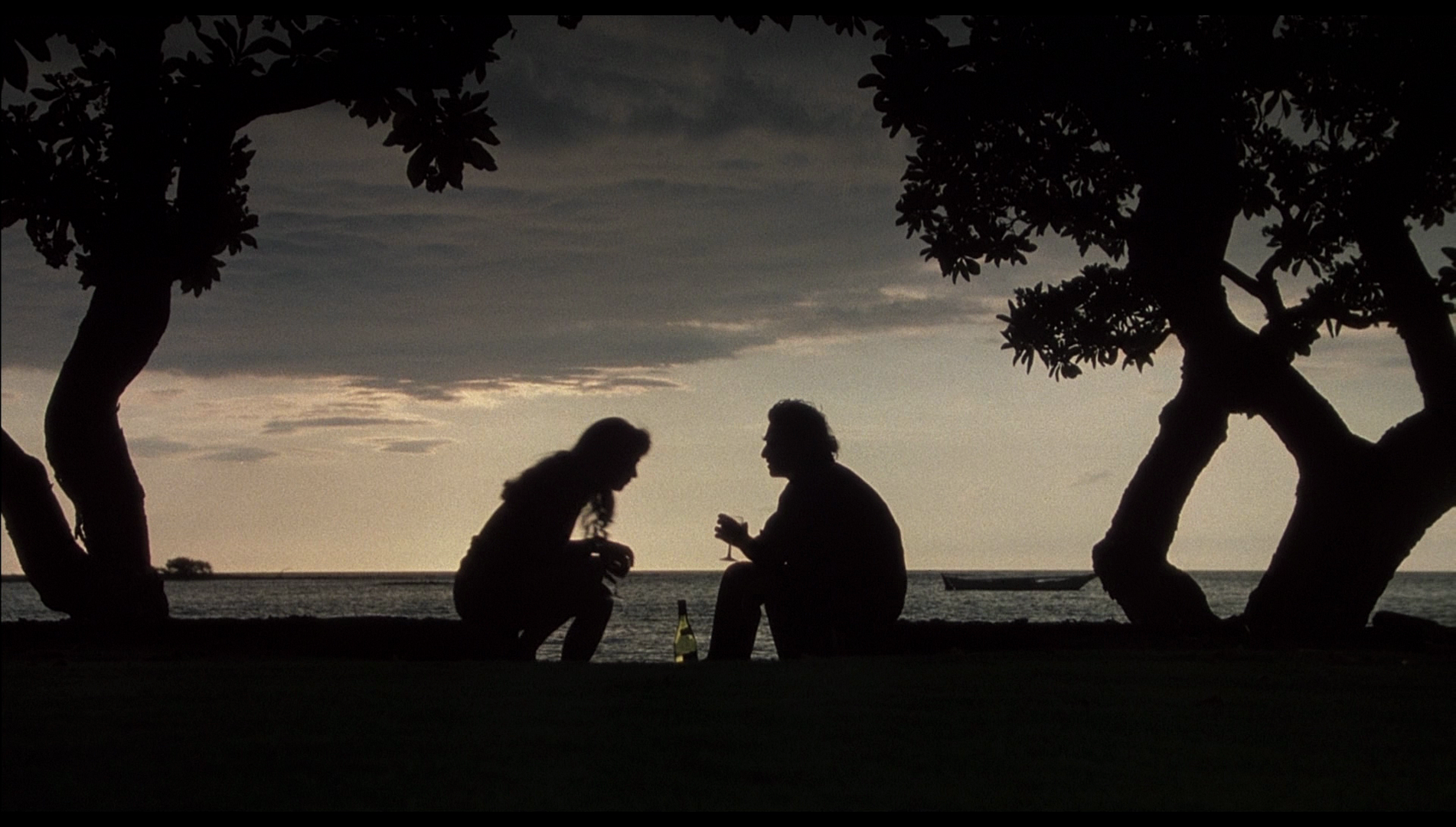 One of the most intriguing aspects of Black Widow is the fact that the true identity of Theresa Russell’s character is never revealed to us: she is only known by the identities she adopts for her victims (Catharine, Marielle, Margaret, Rennie). Her motives are never fully explained either: certainly, it seems she is motivated to some extent simply by her desire to accumulate wealth, making her a ‘good’ capitalist. In Hawaii, Catharine tells Alex that she came to be rich through having ‘lots’ of husbands, but ‘Rich is hard. You never really figure out you’re quite there’. However, as Catharine herself and some of the other characters in the film (including Alex) observe, Catharine is incredibly wealthy by the time she approaches Paul, thanks to the money she has inherited from her previous husbands, and therefore is under no pressing urgency to acquire more money. Bizarrely, Catharine claims that her crimes are motivated by love of a perverse sort. When Alex presents Catharine with a gift of a black widow spider brooch, Catharine discusses the black widow: ‘She mates and she kills’, Catharine says, ‘Your question is, does she love? It’s impossible to answer that unless you live in her world’. Certainly, in the film’s opening sequences, following the news of the death of her first husband and victim (at least, the ‘first’ husband and victim identified in the narrative) she breaks down and weeps whilst alone; there is no audience for her tears (other than the film’s audience itself), so the sorrow would seem to be genuine. The film openly pokes fun at the one of the major paradigms of much mystery fiction – the need to provide a psychological reason for the crimes that have been committed. Talking about the case with Bruce, Alex suggests that ‘this woman, Margaret or whatever her name is, has some deep resentment against older men’. Bruce takes her seriously, until Alex reveals that she is joking: ‘No one knows why anyone does anything’, she says pointedly, in a statement which seems core to the film’s exploration of crime. One of the most intriguing aspects of Black Widow is the fact that the true identity of Theresa Russell’s character is never revealed to us: she is only known by the identities she adopts for her victims (Catharine, Marielle, Margaret, Rennie). Her motives are never fully explained either: certainly, it seems she is motivated to some extent simply by her desire to accumulate wealth, making her a ‘good’ capitalist. In Hawaii, Catharine tells Alex that she came to be rich through having ‘lots’ of husbands, but ‘Rich is hard. You never really figure out you’re quite there’. However, as Catharine herself and some of the other characters in the film (including Alex) observe, Catharine is incredibly wealthy by the time she approaches Paul, thanks to the money she has inherited from her previous husbands, and therefore is under no pressing urgency to acquire more money. Bizarrely, Catharine claims that her crimes are motivated by love of a perverse sort. When Alex presents Catharine with a gift of a black widow spider brooch, Catharine discusses the black widow: ‘She mates and she kills’, Catharine says, ‘Your question is, does she love? It’s impossible to answer that unless you live in her world’. Certainly, in the film’s opening sequences, following the news of the death of her first husband and victim (at least, the ‘first’ husband and victim identified in the narrative) she breaks down and weeps whilst alone; there is no audience for her tears (other than the film’s audience itself), so the sorrow would seem to be genuine. The film openly pokes fun at the one of the major paradigms of much mystery fiction – the need to provide a psychological reason for the crimes that have been committed. Talking about the case with Bruce, Alex suggests that ‘this woman, Margaret or whatever her name is, has some deep resentment against older men’. Bruce takes her seriously, until Alex reveals that she is joking: ‘No one knows why anyone does anything’, she says pointedly, in a statement which seems core to the film’s exploration of crime.
Video
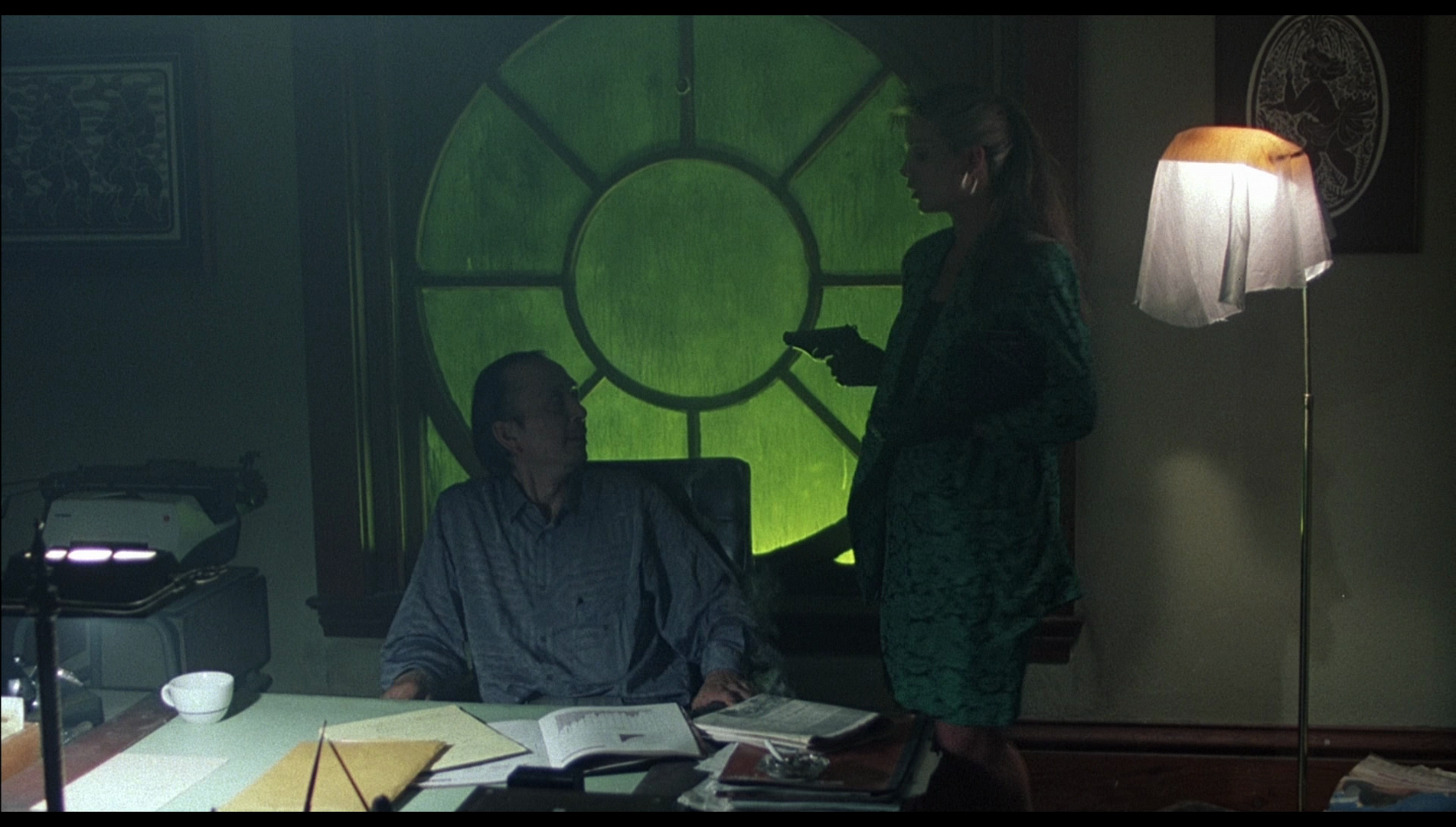 Black Widow takes up 18Gb of space on a single-layered Blu-ray disc. The film is uncut and runs for 101:51 mins. The 1080p presentation uses the AVC codec and is in the film’s intended aspect ratio of 1.85:1. Black Widow takes up 18Gb of space on a single-layered Blu-ray disc. The film is uncut and runs for 101:51 mins. The 1080p presentation uses the AVC codec and is in the film’s intended aspect ratio of 1.85:1.
An incredibly beautifully shot film, with compositions which are often symmetrical, with the subject framed in the centre, Black Widow is also very intricately lit, with strong emphasis on the interplay of light and shadow – from the nighttime sequences, in which shadows taper off into darkness around the characters, to the bold sunlight of the later sequences of the film which are set on Hawaii. The film is the subject of an incredible presentation on this new Blu-ray release from Signal One. The presentation contains a very, very good level of detail, offering a clear improvement over the film’s previous home video releases in this regard. Vibrant colour consistency is evidenced from the film’s opening titles sequence, which features a rich, deep red text on a plain black screen – and carried through the film’s expressionistic use of primary colours in the lighting of various scenes (reds and greens, predominantly). Excellent contrast levels underscore the aforementioned care given to the lighting during the production, offering rich and deep blacks, very carefully-balanced nighttime sequences, and strong and defined mid-tones. There is no overt, damaging evidence of digital ‘tinkering’, and the presentation retains the structure of 35mm film, ensuring an organic, filmlike image – something which is retained by the impressive encode.   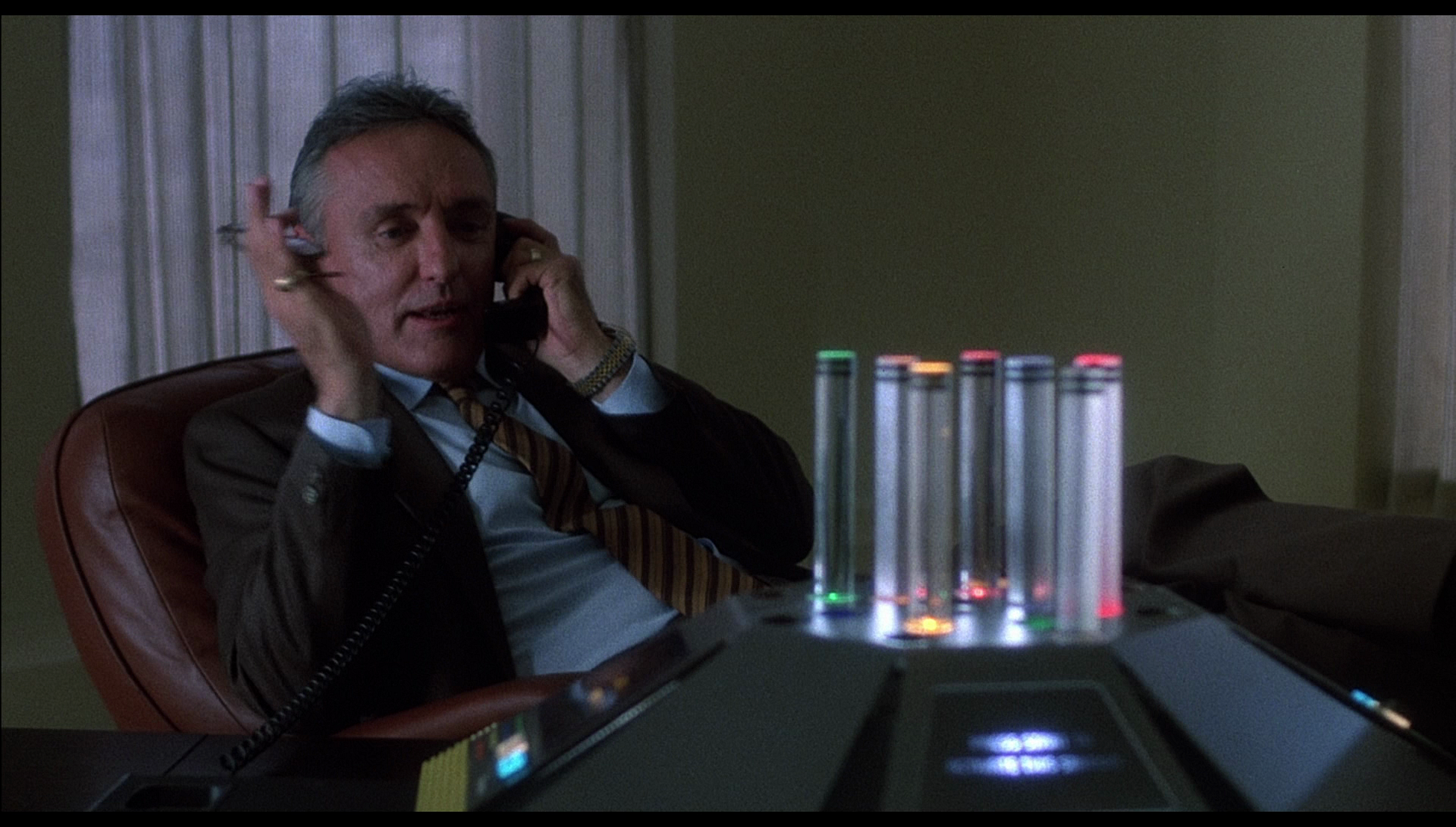
Audio
Audio is presented via a LPCM 2.0 stereo track with accompanying optional English subtitles for the Hard of Hearing. It’s a deep track with a strong sense of range; sound separation is immersive without being overly ‘showy’. The subtitles are error free and easy to read.
Extras
The disc includes: - an audio commentary with film historians Julie Kirgo and Nick Redman. This is an interesting, well-researched commentary in which Kirgo and Redman discuss the film’s production and themes, focusing in some detail on the film noir motifs within the picture and the appeal of films noir during the 1980s. There’s a strong engagement with the film’s various contexts (in terms of society, attitudes towards gender, genre and the work of the film’s cast and crew). - ‘The Predator and Her Prey’ (27:05). In a new interview shot this year (2016), the film’s writer Ronald Bass says that he doesn’t agree that there is such a thing as neo-noir: ‘there’s noir and then there’s not’. He discusses the differences between Russell and Winger and their performances. Bass talks about how he became a writer and how Black Widow was written – the script was an amalgam of two stories that Bass had outlined. Winger was approached first and refused to play the killer; she also specified that Theresa Russell must play Catharine. It’s an excellent, thoughtful interview. - ‘Bright Colours, Deep Blacks’ (28:27). Here, in another new interview, Conrad W Hall, the son of Black Widow’s cinematographer (Conrad L Hall), talks about his father’s work on the picture. Hall suggests that his father’s focus on the subtleties of light and dark originated with his work as a director of photography on monochrome pictures such as Morituri, his first film. Hall discusses some of his father’s work generally before focusing in detail on the photography of Black Widow, offering some fascinating insights into the visual design of the picture (eg, the contrast in terms of the costumes between Catharine and Alex; the use of red, which was inspired by the underbelly of the real black widow spider). - Gallery (1:08). - Trailer (1:59). - US TV spots (2:06).
Overall
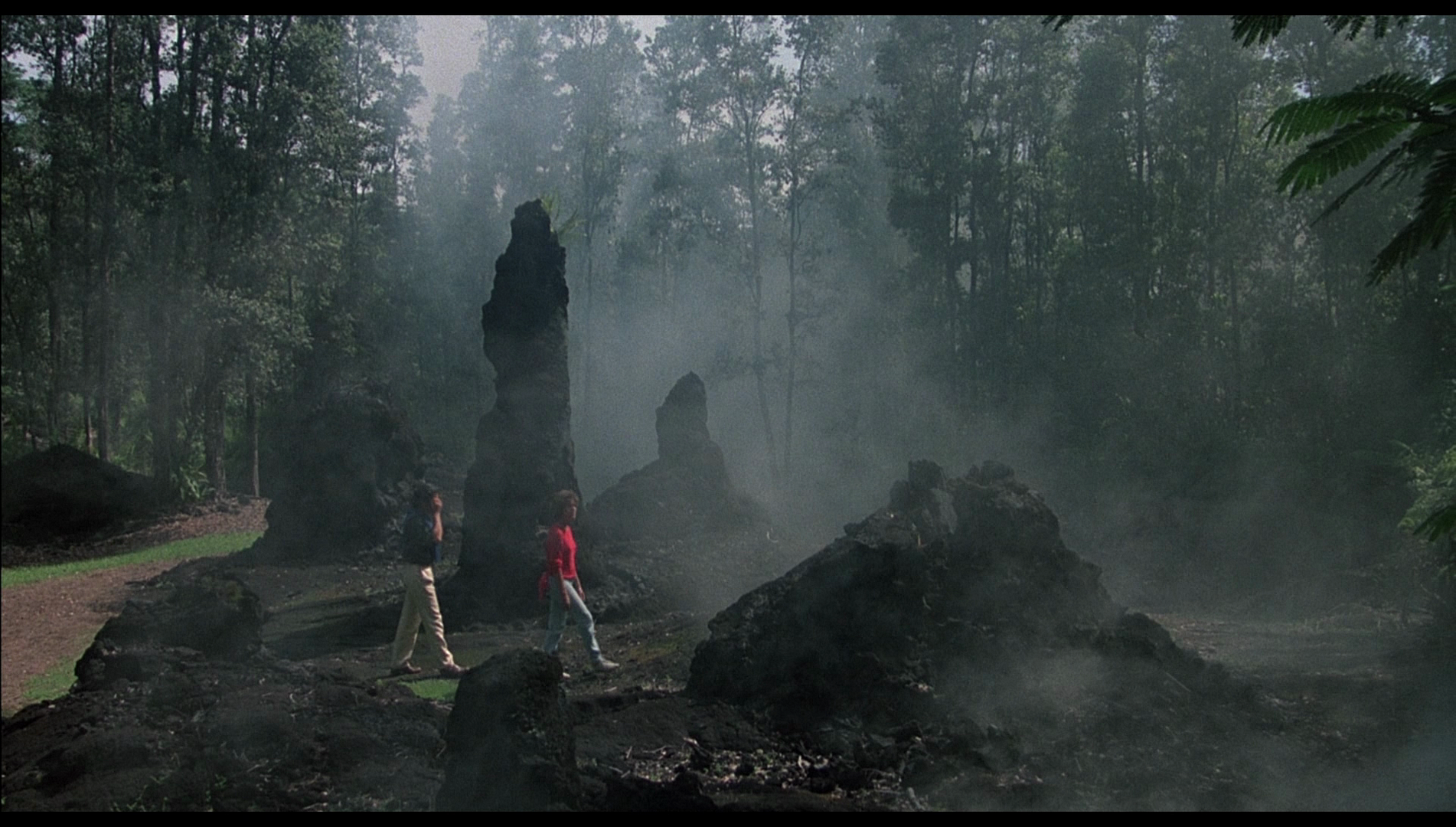 Black Widow is an interesting, ambiguous film, anchored by two excellent performances from the film’s female leads (Winger and Russell). Pauline Kael once praised Debra Winger as one of the finest American screen actresses (Kael, cited in Smirnoff, 1996: 143). Looking at her performance in this, it’s easy to see why: Winger sparkles in her role, and Russell is a perfect foil for her. (Ron Bass reveals in the interview with him on this disc that Winger was the first and only choice for the film, and when she refused to play Catharine, she insisted that Russell be approached for the part of the killer.) Like a number of other neo-noir pictures (for example, The Last Seduction or Basic Instinct), Black Widow could be interpreted as both a crypto-feminist statement, as some critics have suggested, or as a film that is about an attempt to capture a ‘deviant’ woman by a ‘pure’ female protagonist (ie, narrativising Freud’s Madonna/Whore complex). Black Widow is an interesting, ambiguous film, anchored by two excellent performances from the film’s female leads (Winger and Russell). Pauline Kael once praised Debra Winger as one of the finest American screen actresses (Kael, cited in Smirnoff, 1996: 143). Looking at her performance in this, it’s easy to see why: Winger sparkles in her role, and Russell is a perfect foil for her. (Ron Bass reveals in the interview with him on this disc that Winger was the first and only choice for the film, and when she refused to play Catharine, she insisted that Russell be approached for the part of the killer.) Like a number of other neo-noir pictures (for example, The Last Seduction or Basic Instinct), Black Widow could be interpreted as both a crypto-feminist statement, as some critics have suggested, or as a film that is about an attempt to capture a ‘deviant’ woman by a ‘pure’ female protagonist (ie, narrativising Freud’s Madonna/Whore complex).
Signal One’s presentation of the film is exemplary. Given the fact that since its initial release, most people will have only seen the film via television broadcasts, videocassette or DVD releases, it’s easy to forget how spectacular the film’s photography is and how much it contributes to the film overall. This Blu-ray release remedies that with a tip-top presentation of the main feature, which might encourage some viewers to watch the film with a brand new eye. The release also contains some superb contextual material: the interviews with Bass and Hall are illuminating, thoughtful and filled with interesting information, and the commentary makes some very keen observations and provides the film with a strong sense of context. This is yet another of a run of excellent releases by Signal One and comes with a very strong recommendation. References: Derran, Alison, 2000: Lesbian Film Guide. London: Cassell Kapsis, Robert E, 1992: Hitchcock: The Making of a Reputation. The University Press of Chicago Smirnoff, Marc, 1996: ‘Pauline Kael: The Critic Wore Cowboy Boots’. In: Brantley, Will (ed), 1996: Pauline Kael. University Press of Mississippi: 140-60 Tasker, Yvonne, 1998: Working Girls: Gender and Sexuality in Popular Cinema. 


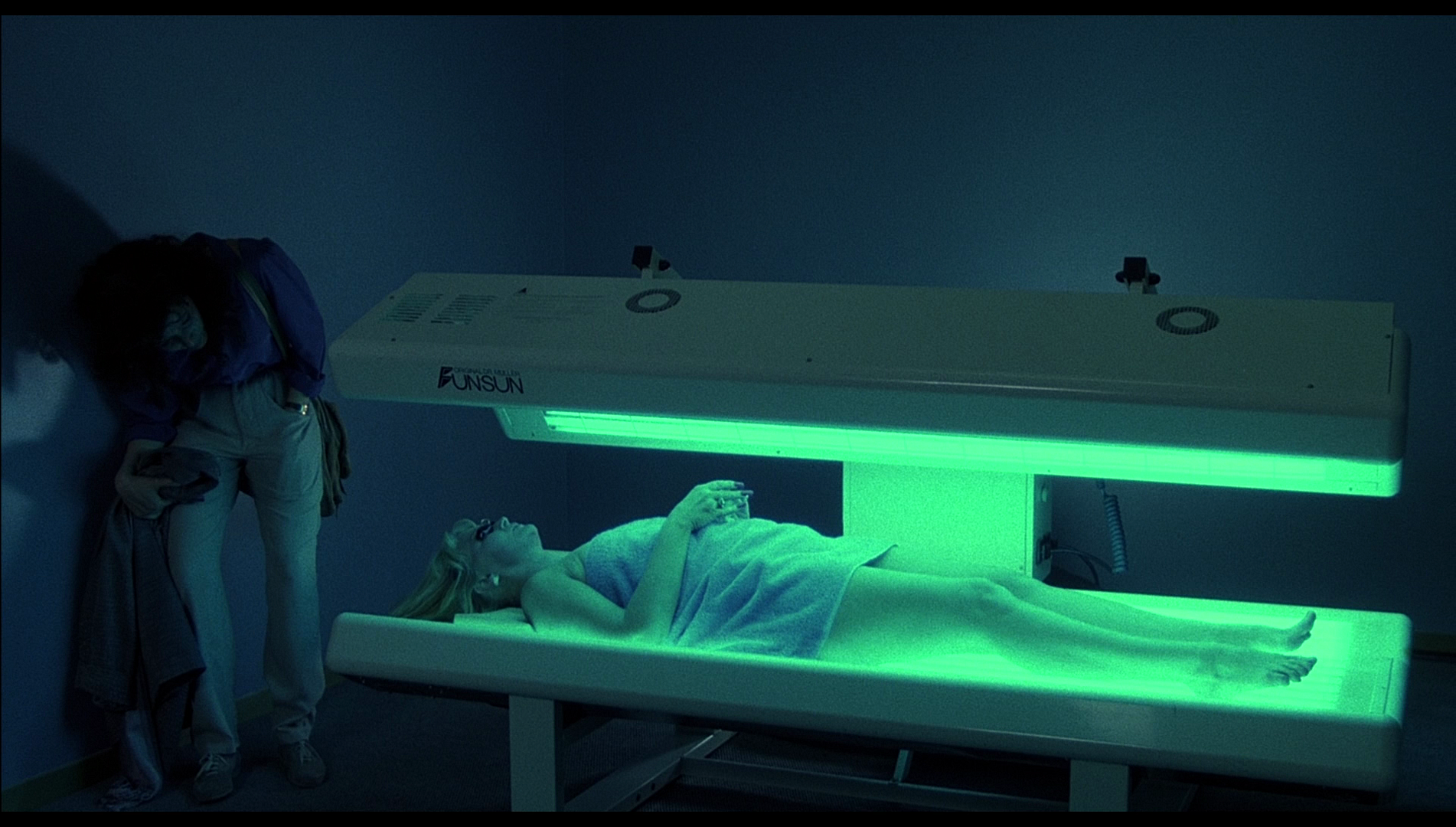
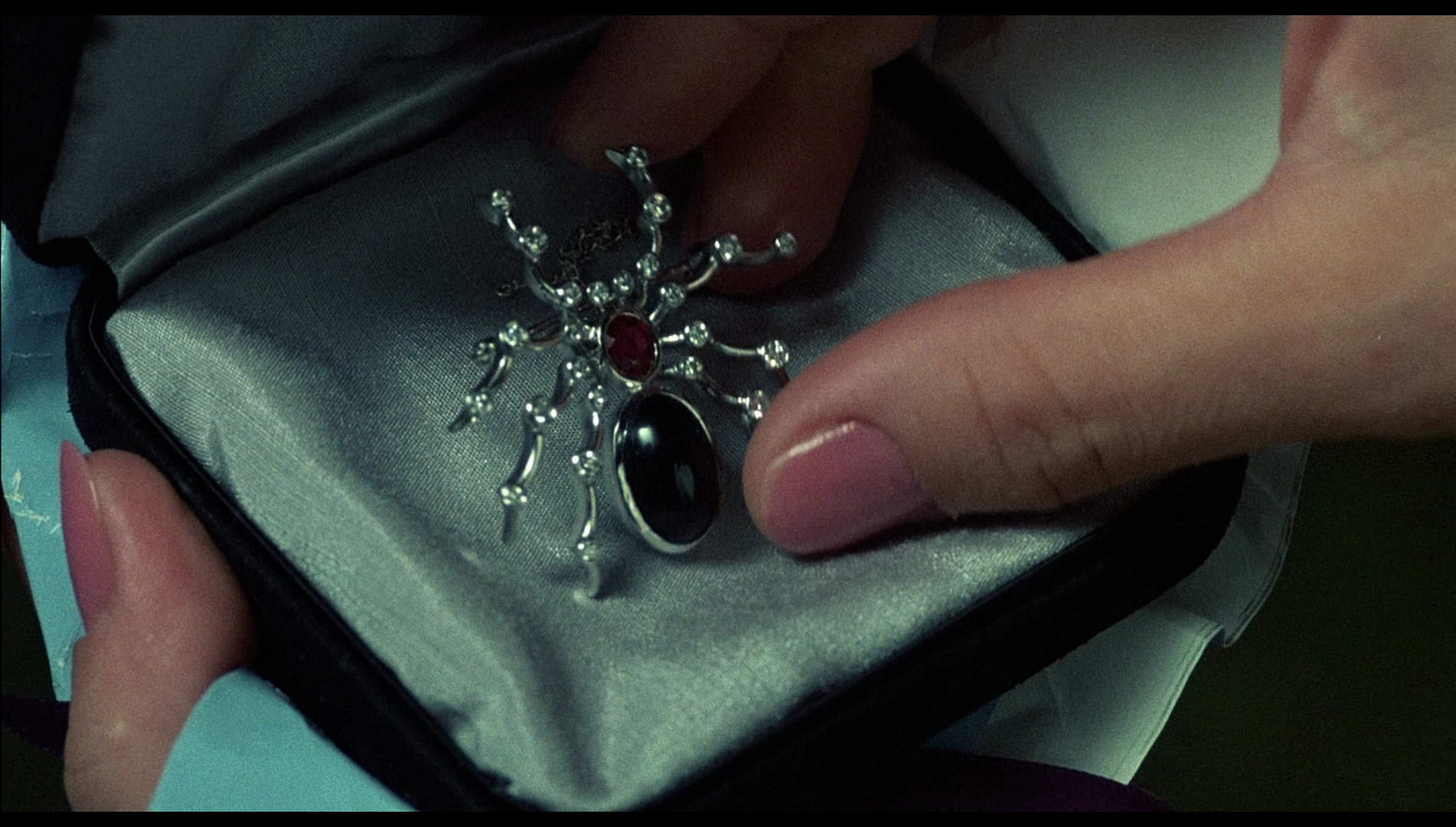

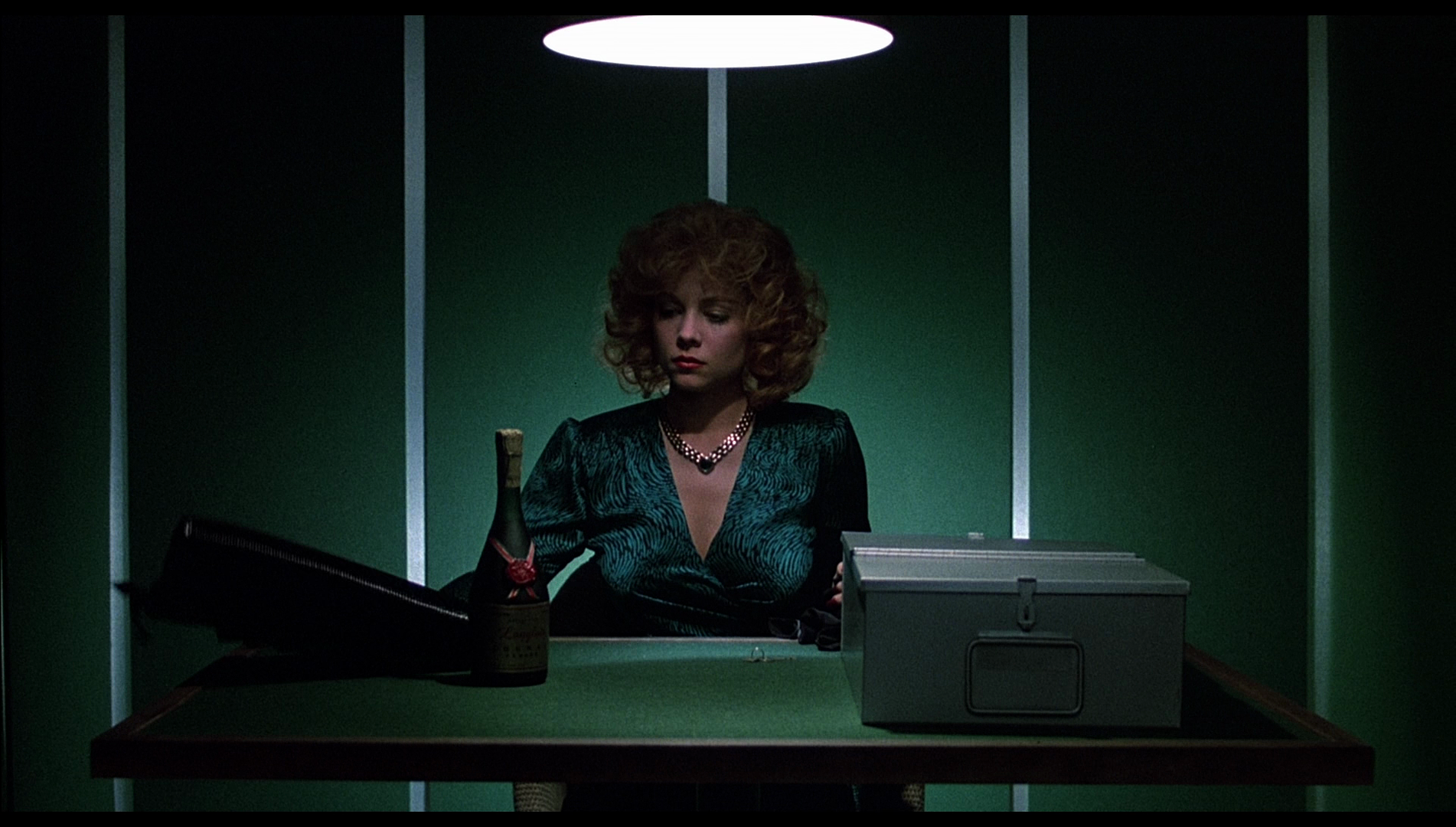
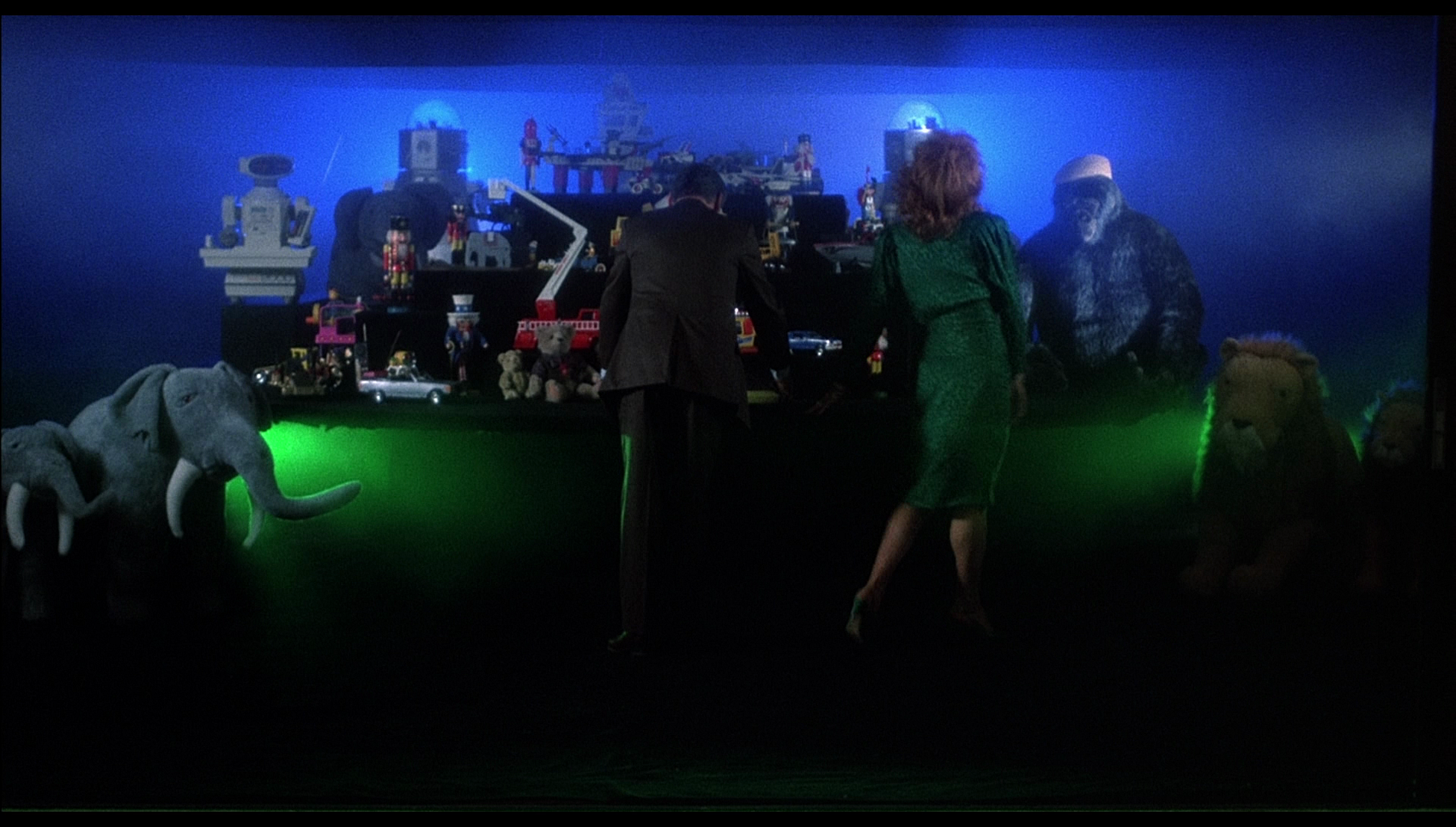
|
|||||

|